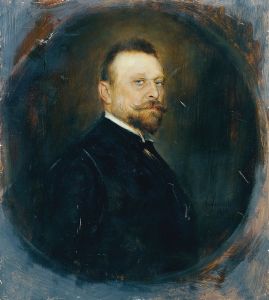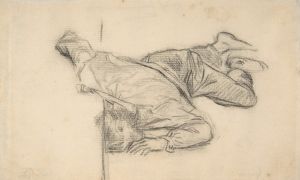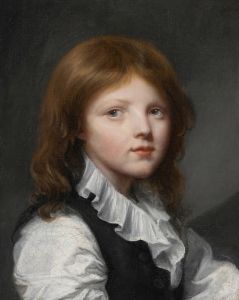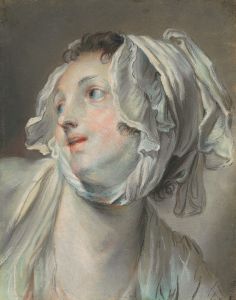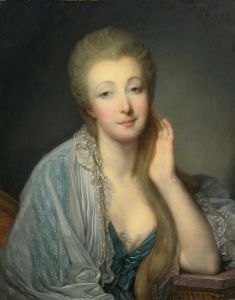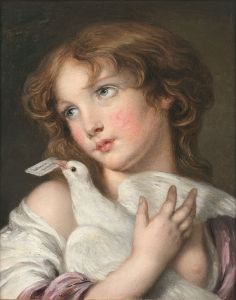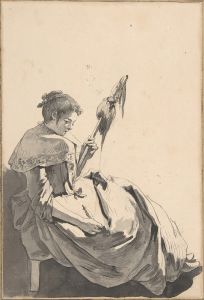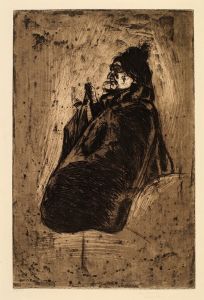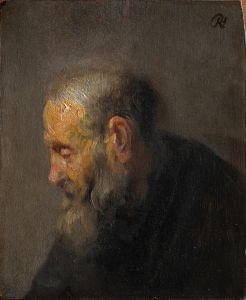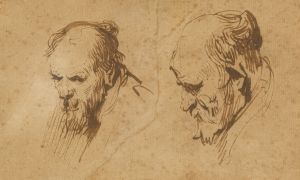
Study of the Head of an Old Woman
A hand-painted replica of Jean-Baptiste Greuze’s masterpiece Study of the Head of an Old Woman, meticulously crafted by professional artists to capture the true essence of the original. Each piece is created with museum-quality canvas and rare mineral pigments, carefully painted by experienced artists with delicate brushstrokes and rich, layered colors to perfectly recreate the texture of the original artwork. Unlike machine-printed reproductions, this hand-painted version brings the painting to life, infused with the artist’s emotions and skill in every stroke. Whether for personal collection or home decoration, it instantly elevates the artistic atmosphere of any space.
Jean-Baptiste Greuze, a prominent French painter of the 18th century, is well-known for his genre paintings and portraits that often depict scenes of everyday life with a moral undertone. One of his notable works is "Study of the Head of an Old Woman," which exemplifies his skill in capturing human emotion and character through portraiture.
"Study of the Head of an Old Woman" is a fine example of Greuze's ability to convey the subtleties of human expression. The painting focuses on the detailed depiction of an elderly woman's face, showcasing Greuze's mastery in rendering the textures and nuances of aging skin. The woman's expression is contemplative, perhaps introspective, and her eyes are rendered with a depth that suggests a lifetime of experiences. This study is not just a representation of physical appearance but also an exploration of the subject's inner life, a characteristic feature of Greuze's portraiture.
Greuze's work often reflects the influence of the Enlightenment, a period that emphasized reason, individualism, and a focus on human emotion and morality. His portraits, including "Study of the Head of an Old Woman," are imbued with a sense of realism and empathy, capturing the dignity and complexity of his subjects. This approach was somewhat innovative at the time, as it diverged from the more idealized and formal portraiture that was prevalent in the earlier part of the 18th century.
The painting is executed with a soft, muted palette, which is typical of Greuze's style. The use of light and shadow in the work is particularly effective in highlighting the contours of the woman's face, adding a three-dimensional quality to the portrait. Greuze's technique involves delicate brushwork that enhances the lifelike quality of the painting, drawing the viewer into the intimate space of the subject.
Greuze's portraits were highly regarded during his lifetime, and he enjoyed considerable success and patronage. However, his reputation experienced a decline towards the end of his career as the art world shifted towards Neoclassicism and Romanticism. Despite this, his works, including "Study of the Head of an Old Woman," have been re-evaluated in modern times and are appreciated for their emotional depth and technical skill.
"Study of the Head of an Old Woman" is a testament to Greuze's ability to capture the essence of his subjects with sensitivity and precision. It remains an important work within his oeuvre, reflecting both the artistic trends of the 18th century and the timeless human themes that continue to resonate with audiences today. The painting is often studied for its contribution to the development of portraiture and its reflection of the societal values of its time.
While specific details about the provenance or current location of "Study of the Head of an Old Woman" may not be widely documented, the work continues to be recognized as a significant example of Greuze's artistic legacy.





